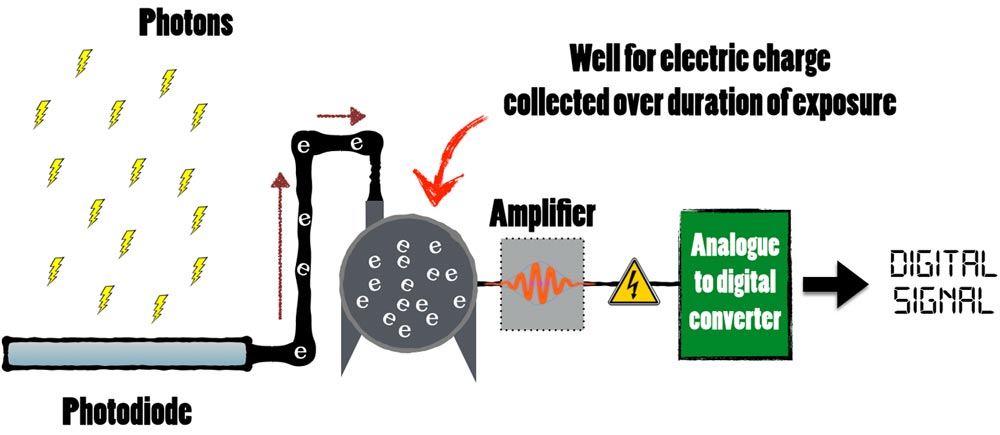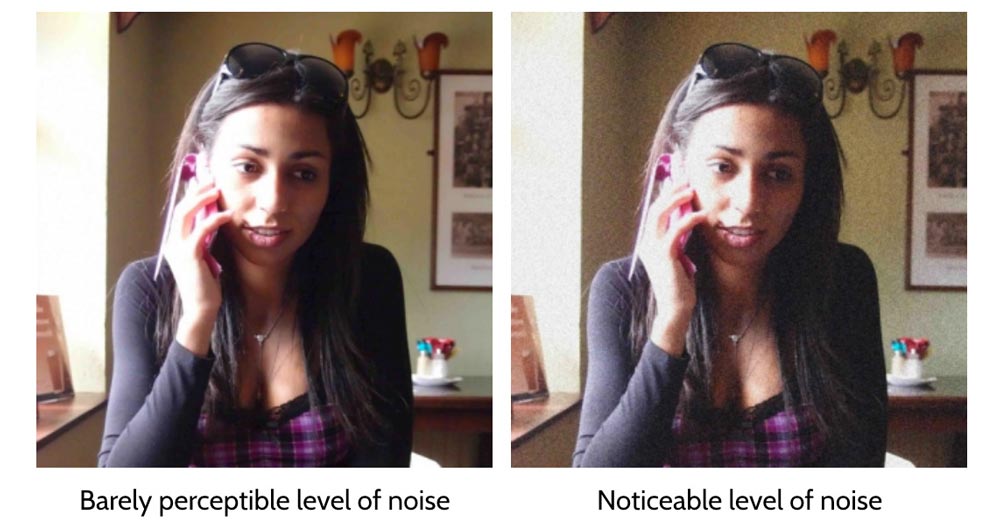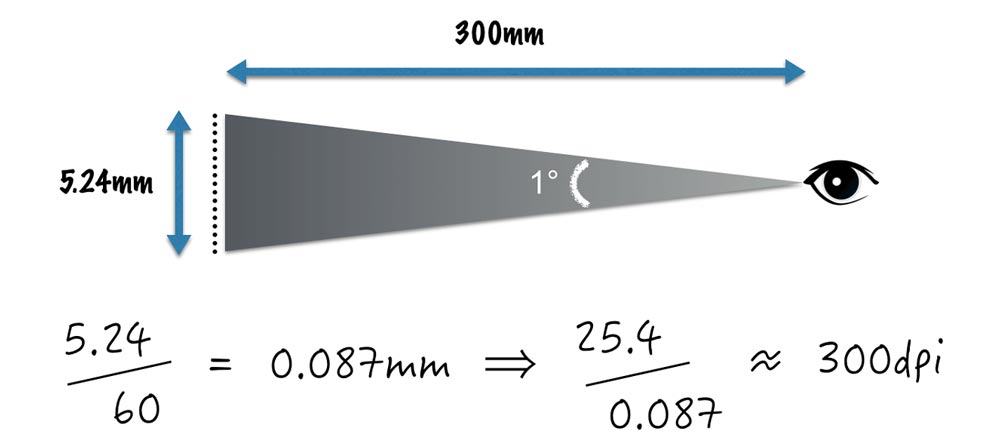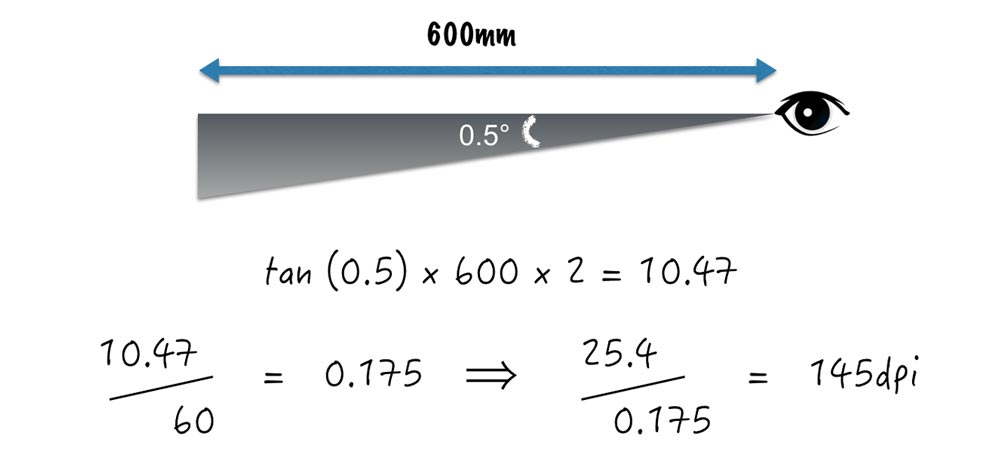Walk through the camera department of any electronic seller and the first statistic you will see next to the model name is the number of megapixels—12MP, 16.1MP, 24MP and so on. Especially in the lower end of the digital camera market (specifically, the point-and-shoots and the entry-level DSLRs and mirrorless cameras) the pixel has become the front-line of the battle between the manufacturers as each hopes to take the podium of bestseller. Move into the above $1,000 market and the megapixel battle is much less fierce: consumers have a better understanding of cameras and the technology behind them.
So why is it an issue? Well, firstly, as far as megapixels are concerned more is not necessarily better. Most compact cameras these days are fitted with a 1/2.3” sensor—that’s 5.76mm x 4.29mm, which is miniscule. A UK postage stamp is 20mm x 24mm (almost 20 times the area). I could fit 4-5 of these sensors in on my thumb nail. To use the technical term, a 1/2.3” sensor is teeny weeny. You might think that this is technology – smaller is better and you’d rather have 12MP on a tiny chip than a fist-sized sensor. Alas, such logic does not apply here.
The issue is the size of the individual pixels themselves. 12MP on a full-frame camera (36mm x 24mm) versus 12MP on a 1/2.3” sensor means that each individual pixel is much larger (35 times larger, in fact). That equates to 35 times more light being caught, all else being equal. The most common analogy used is buckets in the rain (the droplets being photons of light). For a given period of time a paddling pool which has 35 times the area of a bucket would collect 35 times as much water (or light).
This is all about image quality; specifically, the reduction of noise. The signal from our cameras is amplified before it reaches the cameras CPU. The level of this amplification for each camera is determined by the ISO setting—the higher the ISO the more the signal will be amplified. This process introduces noise because of random fluctuations in the signal resulting from the physical properties of light as well as “imperfections” native to all electrical circuits (you can read a more detailed article about noise here).
You’ll have seen evidence of noise in photographs before, even if you weren’t aware of the term. It most often crops up as unwanted white speckles in photographs.
Compact cameras with their smaller sensors need to amplify the light more because they were not able to capture very much in the first place. This additional amplification (coupled with the fact that the budget end cameras will not have such advanced algorithms and noise-reducing processing capabilities) means that noise can creep into images even at relatively low ISO settings.
For any new-comer to the digital camera market this concept is critical to help you differentiate cameras by more than just the number of megapixels.
So how many mega pixels do I need?
As with many questions, the correct answer is not the most helpful—“it depends”. Most importantly, what are you taking pictures for? To upload on Facebook? To print out and hang on the wall? For commercial sale? Most people reading this will probably be just looking to take some decent photographs—something better than your typical blown-out holiday snap. If they can also enlarge the image to hang on the wall, so much the better.
Let’s take Facebook as an example. Facebook currently lets you upload 2048 x 2048 pixel images. Most point-and-shoots and mirrorless cameras have an aspect ratio of 4:3, whilst DSLR sensors are 3:2. Let’s take the latter as our base simply because it is a more standard ratio (same as 35mm film). With a width of 2048 pixels the height would be 1365 pixels, meaning that a 2.8MP camera would be more than sufficient. Incidentally, 2048px is the length resolution of an iPad (retina models) and more than most (non-“retina”) laptops. So, just to repeat, anything greater than a 2.8MP camera is not going to be of any help on Facebook.
What about printing?
300 dots per inch (dpi) is most often quoted as the resolution at which the human eye can no longer distinguish the individual pixels. This is with good basis. Although you can argue that it assumes 20/20 vision—which does not represent maximum visual acuity—and a set viewing distance it is nevertheless a defensible figure on which to base any calculations (I’ll show why in a moment). The iPhone 6, by the way, is 326ppi. Good luck spotting the pixels on that.
Dots per inch refers to the number of dots that can be placed together in a line one inch long. It is not the number of dots in a square inch, just to be clear.
The standard album size for photographs (if anyone still uses those) is 7” x 5” which would mean you need a 3.2MP camera. But to hang on the wall you’d ideally want at least a 30cm wide image (so 20cm in height with a 3:2 aspect ratio). This means an 8.3MP camera—well below the resolution of just about any point-and-shoot on the market today. It’s easy to realize that doubling the length of the printed photograph means quadrupling the pixels. When we start talking about a 50cm wide image we’re going to need a 23MP camera.
Let me repeat, that’s 50cm wide by 33.3cm high. You’re unlikely to want to print this size, but let’s just assume you do just so I can make another point. As I mentioned above, the oft-quoted 300dpi figure which we’ve been using is based off 20/20 vision at a viewing distance of 30cm. Tests have shown that at a viewing distance of 30cm those with 20/20 vision can distinguish up to 30 cycles per degree (cpd). A degree refers to one degree of human vision and a cycle means two individual dots. In other words, we can distinguish up to 60 little dots in one degree of human vision.
But we’re talking here about a fixed angle and so as you move away from the subject the viewing area also increases. By calculating from 300dpi we implicitly assume that we never move back from the image. But would you really view a half a metre wide image at 30cm? Probably not. In fact, the required dpi to retain the same perceived resolution decreases as we move further away.
I said before that we’d need a 23MP camera for a 50cm wide image. Let’s challenge that for a moment. How far away would you actually stand? Half a metre wide is pretty big. I reckon I would stand about 60cm away to naturally view the image. In fact, at a 60cm standing distance and assuming I have 20/20 vision I wouldn’t be able to tell the difference between a 5.5MP camera and a 23MP camera. This is because at 60cm 145dpi is the limit of my visual acuity—not 300dpi!
Obviously, there are other reasons beyond printing large sizes why you might want more megapixels. For example, you may want to crop your photograph and halving the size of the photograph means you will lose half of the available pixels. Nor is the above irrefutable. People may look close up at photographs or have better vision (the upper limit of the human vision in good light is 50cpd not 30cpd). Nevertheless, it should serve as logical justification as to why the megapixels battle is very much a fallacy, and when you start thinking about image deteriorating (noise) more really can mean less.



